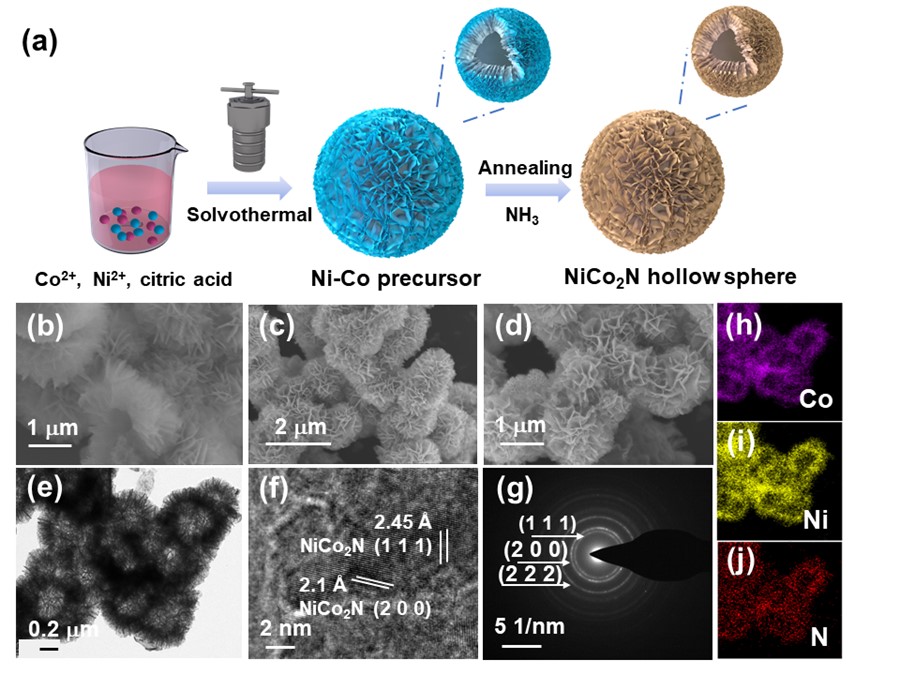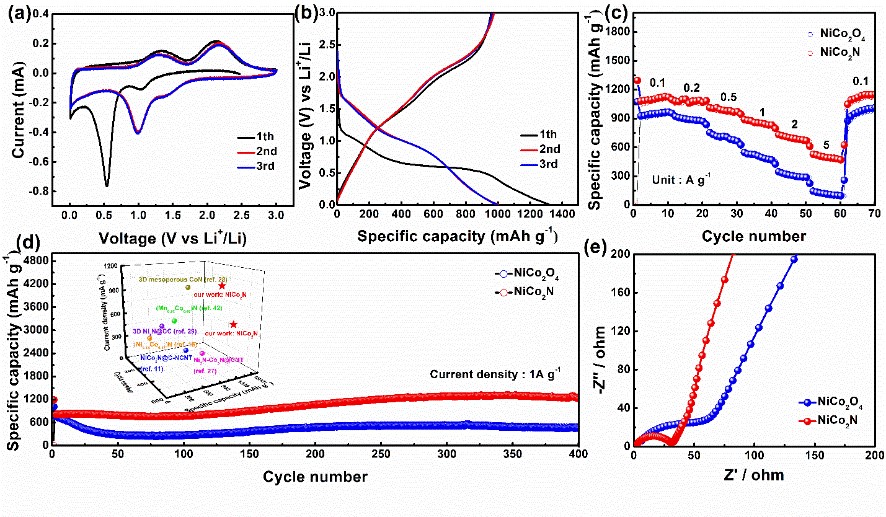Recently, a research team led by Prof. ZHAO Bangchuan from the institute of Solid Materials of the Hefei institutes of Physical Science (HFIPS) developed a new anode material (NiCo2N) for lithium-ion batteries (LIBs). This material, which can be obtained via a simple synthesis process, exhibits superior cycling stability with large reversible specific capacity and high-rate performance. The result has been published in Chemical Engineering Journal.
With higher electronic conductivity and relatively lower conversion reaction potential, Transition metal nitrides are promising anode materials for LIBs. However, the poor cycling stability induced by large volume change during repeated lithiation/delithiation process impeded their further development. Therefore, it is of great importance to develop suitable anode materials for LIBs.
In this work, without using any template or compositing material, the researchers synthesized a hollow sphere NiCo2N material with interconnected nanosheets shell through a facial solvothermal route.
"The whole process is green and cost-efficienct." said Prof. ZHAO.
The related experimental analysis proved that the 3D interconnected nanosheets could provide a large number of active sites for rapid electrochemical reaction and a large contact area between the active material and the electrolyte.
Besides, it could shorten the diffusion pathway of Li+ ions and electrons, leading to the improved reaction kinetics. The hollow structure can effectively relieve the volume variation and suppress the particle aggregation during discharge/charge process, and thus prolong the cycling life of NiCo2N electrode.
This work may give some inspiration on the design and construction of hollow structure LIBs electrode material with high electrochemical performance.








